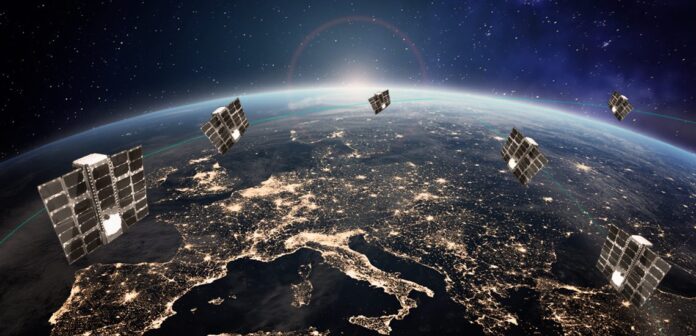Barcelona-based satellite IoT provider Sateliot, in the process of deploying a low-earth orbit (LEO) constellation of NB-IoT satellites, has struck a partnership with power grid solutions company Sentrisense to launch a satellite-augmented IoT service for electric grid sensors. The Sweden-headquartered firm’s IoT devices attach to electric towers and power lines, and connect to both terrestrial and satellite-based cellular IoT networks.
Specifically, Sateliot is building an NB-IoT satellite system based on Release 17 specs in the 5G NR cellular standard. It has a deal with AWS, signed towards the back-end of last year, to build a fully virtualized cloud-native 5G core for its NB-IoT satellite service. Sateliot wants to wholesale the service as a roaming extension for terrestrial mobile operators. Telefonica said last summer it is trialling the service.
The Sentrisense solution “turns power line infrastructure smart”, the pair said. A straight IoT sensor setup with satellite backup for out-of-reach grid infrastructure, it helps utility companies to monitor and modify amperage and manage electric grids more efficiently. The firm said it will alert first responders to pinpoint accidents, fires, broken wires, and other hazards in five minutes, even in “blank areas” – compared with four hours for non-IoT lines.
The devices can also gather information about ambient conditions, including about humidity, temperature, wind direction, and wind speed. “Electric grids [will be] able to predict weather and fire conditions,” it stated. The satellite capability affords Sentrisense a way to expand the offer, and fill-out the picture. It has deployed NB-IoT and LTE-M sensors to electric wires in the USA, Australia, Belgium, Chile, Spain, and Sweden.
Its sensors are attached directly to a hot line with a standard industrial clamp; they can also be installed remotely by drone, said the statement. They feature a solar panel and a battery, and claim a 10-year lifespan. They connect to Wi-Fi, 4G, or 5G for the backhaul. Meanwhile, Sateliot is pushing for a full commercial launch, on an expanded LEO base, sometime in the second half of 2023.
Jaume Sanpera, chief executive at Sateliot, said: “The massive connectivity between 5G satellites and the sensors will allow far more accurate predictions on wear and tear analysis, alert to the presence of fallen trees or ice on the lines, and make models of wire inclination and distance from the ground and model the ideal ampacity, among other applications. All of it with an affordable connection of just $1 per month per device.”
Sebastán Cerone, chief executive at Sentrisense, said: “This agreement will allow Sentrisense sensors to connect anywhere in the world, even in remote locations. The electric grid is the largest engineering feat of humankind right now, by definition is an analog asset, and we are fully digitizing it. We want to turn the grid from a mere instrumental transporting method into a smart tool, able to predict fires and other weather and environmental hazards.”

